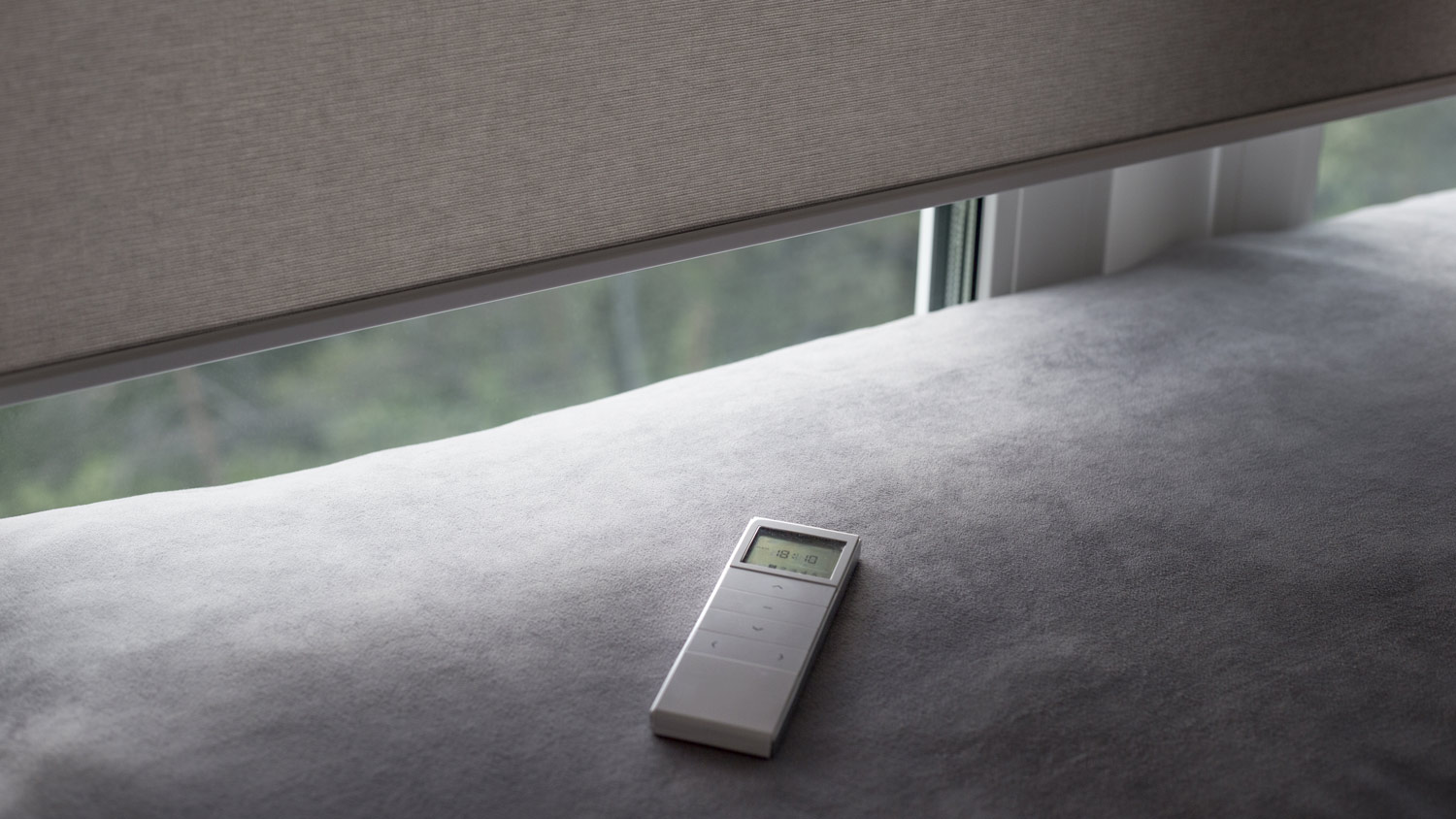
Estate shutters can add a stately appearance to your home and block out light. Learn how much estate shutters cost, depending on window size and material.
Draw the curtains and welcome the day with this easy measurement DIY


If you've ever wandered through the curtain aisle and realized you don't know the measurements of your windows, you're not alone. While you may be tempted to make an educated guess, it's always best to head back home and measure for curtains before picking out the best panels. Everything from your hardware placement to the style of the panels, learn how to measure for curtains and achieve that polished look you're dreaming of.
The first step in learning how to hang curtains like a pro is to pick the best type of curtains for your windows.
First of all, consider where the curtains will go. Cafe curtains work well in bathrooms and kitchens, for example. Grand curtains, on the other hand, fall all the way from above the window frame to the floor, making them a better pick for the living or dining room.
The main type of curtain lengths include:
Classic: Hang above the window and fall right below the windowsill
Long: Hang above the window and fall right to the floor level
Grand: Hang from the top of the window to the floor and pool several inches of fabric at the bottom
Valance: Hang above the window frame and cover only one-quarter of the window
Cafe: Hang from the center of the window to the sill

Keep in mind that curtain panels come in standard sizes, but you can also order custom lengths and widths such as curtains for arched windows.
Now that you know the type of curtain style you're looking for, let's jump into the measuring process.

Carefully stand on a step ladder—grab a spotter if you have tall windows—and measure the inside of the window frame from one side to the other. The interior width measurement will help you determine the bare minimum amount of fabric you'll need and where to place the hardware in the next step.
For example, there should be at least twice enough fabric to cover the width of your window, even if you split this measurement between two curtain panels. Curtains must be able to close with enough extra space to overlap in the middle and over the edges.
While the width of your window is important, the width of your hanging hardware—typically a curtain rod or extendable tension rod—is the most important measurement. Begin by determining the placement of your rod:
Choose whether you prefer the rod to sit on the interior or exterior of the window frame. Whenever possible, securing hardware to the exterior of the frame is best for making rooms look taller and more spacious.
Exterior rods should extend between 6 and 12 inches above the window frame and 2 to 3 inches beyond the width of the window frame.
Measure the space between the two pieces of hardware to choose an appropriate rod.
If you already have a curtain rod used on the window previously, measure the area where the curtain will hang—in other words, the area between the two wall anchors.
Multiply the width of the rod by two to determine the amount of fabric you need to properly cover the window. As mentioned, you need at least twice the amount of curtain to cover the window.
Once you have this number, you can purchase one extra-wide curtain panel that pulls off to one side or two panels that split down the middle. As we mentioned above, curtain widths and lengths come in several standard sizes, so size up if you're concerned about covering enough space.

Here's where the style of your curtains really come into play. Determine whether you want your curtains to hit the base of the windowsill, the floor, or even a few inches past the floor for a more luxe look. Head back on the stepping stool and measure from the rod to the sill or floor.
Curtain panels also come in standard lengths and often correlate with the standard sizes of windows themselves. However, be sure to measure exactly, as you won't be able to move the hardware on your wall and adjust where your curtains fall once they are installed.
If measurements make you nervous, call a local general handyperson to help with the measurement process. They can assist with the stepladder or even install the hardware to determine the best placement. The cost to hire a handyperson ranges from $60 to $125 an hour depending on where you live.
However, keep in mind that the standard curtain measurements can act as a guide. If you end up with a number that is impossible to find at your local home decor store or online, measure again to double-check.
All in all, the measuring process is very DIY friends. However, you may want to call a local window treatment specialist if you're installing blinds, shade, or heavy drapes.
From average costs to expert advice, get all the answers you need to get your job done.

Estate shutters can add a stately appearance to your home and block out light. Learn how much estate shutters cost, depending on window size and material.

Discover the average window treatment cost, including price ranges and key factors, to help you plan your project with confidence.

Looking to step up your home’s interior with window treatments? Use this guide to blinds installation cost to set an appropriate budget for your project.

Choosing the right blinds starts with knowing your design preferences and finding the right installer. Keep reading to discover common questions on blinds.

Wondering how much do motorized blinds cost? Discover 2025 prices, key cost factors, and tips to save on your motorized blinds installation.

Learn how to remove blinds yourself when you need to clean or replace window treatments.